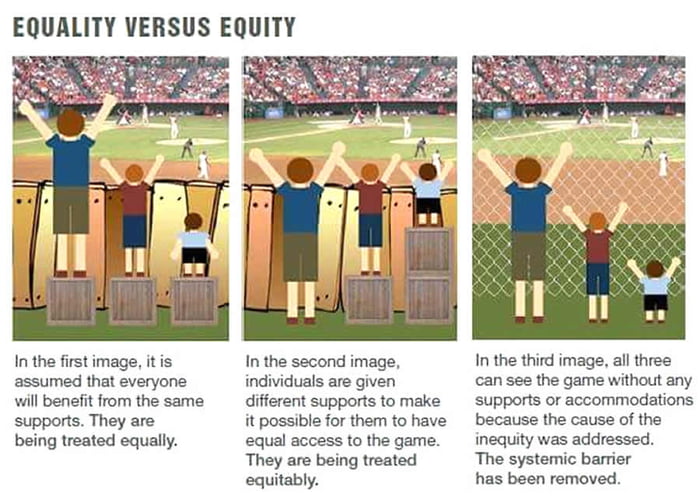Differentiation is one of the most common skills teachers need to have and need to develop. Sadly, it is a skill that can get -forgotten- as demands on teachers increase. For some it comes as second nature. Other teachers have to work a little harder at it, but like with all things teaching- it is a skill you can hone and practice and keep getting better at.
Differentiation is the overall teaching strategy that when effectively implemented includes varying assessments, gathering background data on your students, offering choices, and other things that just help you differentiate automatically. It doesn’t have to be as rough as creating 2-3 levels of worksheets for different students, and luckily, some software that schools use for reading and math differentiate automatically based on students’ performance on a brief assessment.
My special day class has students who are mainstreaming into general education classrooms. Often there is a major disconnect between these two classes in terms of what can and cannot be done. More often than not, when a students is assumed that he/she can’t do something, or isn’t up to that level, the response is usually something like”Well they just don’t have to do that part,” or “He can skip it and do something else,”. I’m sure guilty of it, I mean, who has the time to change your worksheet/paper/project for every little different student that walks into your room. Well, YOU DO! I’ve found from working with GE teachers and my knowledge of my student’s abilities provides the basic recipe for some quick “down and dirty” differentiation that takes no time at all.
Lets take this common 4th grade vocabulary worksheet. You have a class of 28 and a special needs student is in your class for this hour of the day. Here are some Easy quick ways to differentiate. ***Disclaimer: I always send my mainstream kiddos with an aide for behavioral or limited motor reasons. If you don’t have a trained paraprofessional, you could always use a parent helper or peer tutor, even just a student in the class that always gets done quickest!**

For Students With Limited Mobility (cerebral palsy, muscular dystrophy, paralysis etc)
Limited mobility can present with learning disabilities or without. If the student has a device to aide in speech, you simply need a scribe to help with reading the paper and recording answers. If there is no speech device you may have to resort to a more limited form of communication such as a 2-3 response answer or even a simple Yes/No.For example, I have one student who is below average grade level but mainly in our class because she has quadriplegic spastic cerebral palsy. She has limited ability to move her arms but prefers to to make choices. She can do a yes by looking up and a no by lowering her head and slightly shaking it.
For her with this worksheet you could differentiate many ways, but the easiest, fastest way I have found is with flashcards.
For question 1- I would write ‘tonite’ ‘tonyte’ and ‘tonight’ on two flashcards and place in front of her. I would ask “Which is the correct way to spell the word?”, have her choose, and scribe her answer (Which means if she gets it wrong, then she gets it wrong! It feels weird as adults writing down the wrong answer and we can get tempted to want to correct, but just like the rest of the class, save the corrections for the teacher unless asked otherwise). This can be done with every sentence mistake. You can make this easier by making “correct” and “incorrect” cards or even “yes” and “no” cards asking questions like “Is this word correct?”
Learning Disability
Learning disabilities can take many different forms and have multiple levels. You can have a 4th grader at a 2nd grade level or a Pre-Kinder level with a qualification of Learning Disabilities. Some simple modifications for this type of activity could be as simple of having them find only 1 mistake in the sentence or choosing what mistakes they find: “Find a spelling mistake” or “Find a punctuation mistake”. For lower academic levels you could have the students practice their handwriting by rewriting the sentences as corrected by peers. You could also have them pair up with a buddy and help them by working on it ‘together’, peers make the best teachers!
Sensory Processing/Autism/ADHD
There are so so many sensory strategies for general education classrooms that I couldn’t possibly list them all here. Children with Autism are usually seeking out or avoiding sensory experiences and the best way to find out which one your student is is to check the IEP or ask the special educator or OT that works best with the child. Some options include: Printing on different colored paper, masking so only one question shows up at a time, larger sensory friendly pencils or pens, typing as an option instead of printing, working outside, alone, or with a peer, a sensory friendly seat such as lined with tennis balls or having a band tied around the legs for bouncing, a standing desk, headphones to block ambient talking and noise or provide soothing music. There is so much more you can try!
Sure, you may get the occasional ‘neurotypical’ kiddo asking about why Johnny gets special treatment. You can give them the whole ‘because I said so’, or you can point them to this graphic. It’s a great tool to explain the difference between equity and equality and to explain that one day hopefully your classroom will reach the goal of removing barriers to learning altogether!
